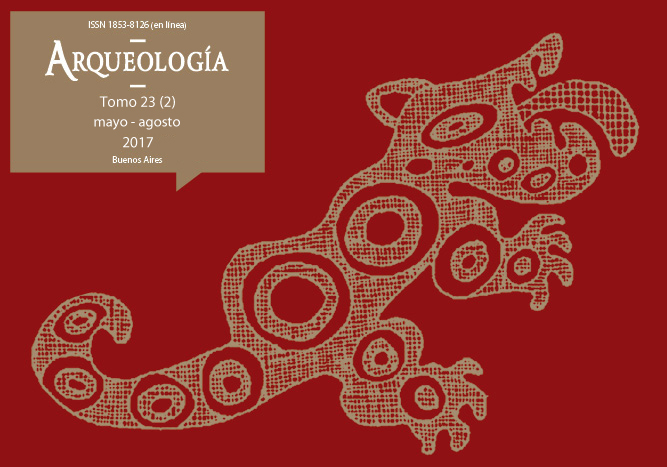Paleodietary analysis of human individuals from the archaeological site of La Rinconada (Ambato Valley, Catamarca)
Keywords:
Regional Integration Period, Stable isotopes, Thermal alteration, Lama glama, Zea mays
Abstract
Here, we present the first isotope values (δ13Cco, δ13Cap and δ15N) and results from human bone and teeth of individuals from the La Rinconada site (Ambato Valley, Catamarca). The site’s chronology covers the period from ca. AD 600 to 1.200. At this point, there was an abrupt and sudden end to the settlement. Six individuals were analyzed. The aim of this article is to estimate human palaeodiet. The inference model was generated taking into consideration the isotope values of resources that were probably consumed, including those of local Lama glama. Furthermore, we suggest that the site was located in an ecotonal environment, and therefore, it had access to resources from different phytogeographical domains. Given that three of the samples had evidence of thermal-alteration, the effect of that variable on isotope measurements was also evaluated. We found that both plant and animal components of the diet were part of a C4 photosynthetic pattern. Finally, limited variation was detected in the isotopic values of the assemblage.Downloads
How to Cite
Gordillo, I., & Killian Galván, V. A. (1). Paleodietary analysis of human individuals from the archaeological site of La Rinconada (Ambato Valley, Catamarca). Arqueología, 23(2), 125-135. https://doi.org/10.34096/arqueologia.t23.n2.3781
Section
Reports
Authors who publish in this journal agree to the following conditions:
- Authors retain copyright and yield to the journal right of first publication with the work registered with attribution license Creative Commons, which allows third parties to use the published always mentioning the authorship of the work and first publication in this magazine.
- Authors can make other independent and additional contractual arrangements for the non-exclusive distribution of the version of the article published in this issue (p. Eg., Inclusion in an institutional repository or publish it in a book), provided that clearly indicate that the work was published for the first time in this magazine.
- It allows and encourages the author / s to publish their work online (eg institutional or personal pages) before and during the process of revision and publication, as it can lead to productive exchanges and greater and more rapid dissemination of work published (See The Effect of Open Access).





(1)13.png)






1.jpg)
1.jpg)


13.png)
1.png)


(1)1.png)









